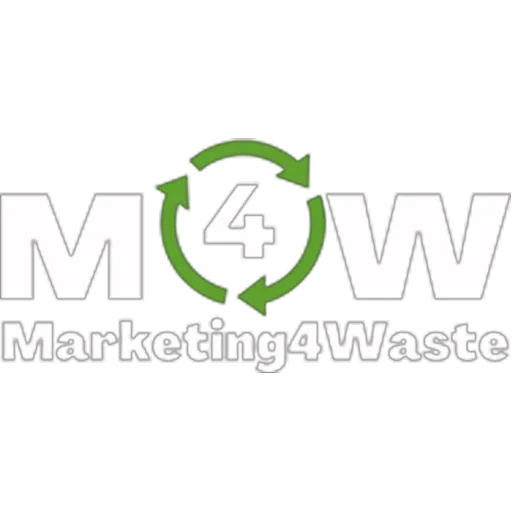Increase the Revenues of Your Waste Company With the Tips Shared in Our Blog Articles

Struggling with Margins? Unlock the Untapped Profit Potential in Secondary Raw Materials
Ladies and gentlemen, fellow architects of a cleaner, more efficient future—let’s set the record straight. Waste management isn’t just about hauling trash and managing landfills anymore. It’s about identifying, seizing, and multiplying opportunities in ways that make your competitors wonder what you’ve discovered that they haven’t.
If you’re still thinking of waste as a problem to get rid of, rather than a commodity to leverage, then you’re leaving piles of money on the table—money that could transform your business from struggling to thriving, from overlooked to indispensable. And today, we’re going to unlock the vault on one of the industry’s most lucrative opportunities: secondary raw materials (SRMs).
[Download the Ebook “Thriving With Waste”]
The Shift from Trash to Treasure
For decades, waste management has followed a straightforward formula: pick up the trash, drop it off, and collect your fee. But this model is showing its age. Rising operational costs, tighter regulations, and shrinking landfill capacities are eating into margins. Meanwhile, there’s a tidal wave of demand for raw materials—a demand that companies like yours are uniquely positioned to fulfill.
SRMs are materials extracted from waste and repurposed for manufacturing—metals, plastics, paper, and even high-value items like rare earth elements. Think about that for a second: every load you collect, every bin you empty, could contain resources that industries are desperate to buy. You’re not just a hauler—you’re sitting on a potential goldmine.
[Download the Ebook “Thriving With Waste”]
Why Secondary Raw Materials Matter to You
Before we dive into the specifics, let’s talk business. Your business. Here are three reasons SRMs could redefine how you operate:
Profitability Like You’ve Never Seen Before
SRMs sell at market-driven prices, often tied to global commodity indexes like COMEX. These aren’t static tipping fees; these are revenue streams that scale with the market.
High-demand materials, such as metals and high-purity plastics, fetch significant premiums. You’re not just collecting fees—you’re creating an asset pipeline.
Cut Your Costs, Boost Your Margins
Every ton of waste diverted into sellable material is a ton that doesn’t go to a landfill—and that’s money saved on disposal fees.
Processing waste for SRMs can be more cost-effective than traditional waste management, especially with the right technologies.
Make Your Business Indispensable
Companies manufacturing electronics, automobiles, and even packaging need reliable sources of SRMs to stay competitive. You can be their go-to supplier.
As demand grows, so does your bargaining power. Suddenly, you’re not just a service provider—you’re a partner in their success.
[Download the Ebook “Thriving With Waste”]
The Demand Explosion You Can’t Ignore
Here’s the kicker: industries across the board are scrambling to secure reliable, affordable raw materials. Why? Because primary resources are getting harder to come by and more expensive to extract. Global markets are shifting toward repurposed materials, and manufacturers are willing to pay a premium for them.
Let’s break it down:
Electronics: Your old phones, laptops, and gadgets contain metals like gold, silver, and cobalt that are worth more recycled than mined. E-waste is a literal treasure trove.
Construction: Recycled aggregates, metals, and plastics are becoming standard in modern building materials.
Plastics: Industries are clamoring for high-quality recycled plastics to use in packaging and products.
Every sector that produces or consumes materials—and that’s just about all of them—is a potential buyer. The question is: will they be buying from you?
[Download the Ebook “Thriving With Waste”]
How to Position Your Business for the SRM Boom
Success doesn’t happen by accident. It’s engineered. Here’s how you can build a waste management empire centered on SRMs:
1. Master the Science of Recovery
Invest in state-of-the-art sorting technologies. Optical scanners, eddy current separators, and AI-powered systems can extract high-purity materials that command premium prices.
Focus on quality. Manufacturers won’t pay top dollar for contaminated or poorly processed materials. Nail this, and you’ll be their first call.
2. Know the Market, Play the Market
Track commodity prices religiously. Timing is everything. Selling when prices peak can multiply your profits.
Consider hedging strategies to lock in favorable prices and protect your revenue streams from market volatility.
3. Build Strategic Partnerships
Forge direct relationships with manufacturers who need what you’re selling. Cut out the middlemen.
Collaborate with tech providers to continually upgrade your recovery processes. Staying ahead of the curve means staying ahead of the competition.
4. Brand Yourself as a Resource Provider
You’re not just a waste company anymore. You’re in the business of supplying essential materials.
Market your company’s expertise in material recovery. The more indispensable you become to your customers, the stronger your position in negotiations.
5. Diversify Your Revenue Streams
Offer consulting services to smaller players looking to improve their waste streams.
Create subscription models for manufacturers who need consistent SRM supplies. Think of it as a “materials-as-a-service” model.
[Download the Ebook “Thriving With Waste”]
What’s Standing in Your Way?
Let’s be real: this isn’t a get-rich-quick scheme. Entering the SRM market takes investment, strategy, and persistence. Here’s what you need to overcome:
Initial Capital: Upgrading facilities and equipment isn’t cheap, but the ROI makes it worthwhile.
Market Expertise: You’ll need to stay on top of commodity trends, buyer demands, and regulatory changes.
Operational Challenges: Processing SRMs requires precision and efficiency. Cutting corners here will cost you.
But let me tell you something—every obstacle is a stepping stone for those willing to step up. The payoff for getting this right is not just financial; it’s transformational. You’ll go from being just another waste management company to being a key player in the global supply chain.
[Download the Ebook “Thriving With Waste”]
Your Next Move
You didn’t get into this business to stay small or scrape by. You’re here to build something that lasts, something that thrives. The SRM market is your ticket to achieving that.
Here’s what I suggest:
Take a hard look at your current operations. Where can you start extracting value from waste streams?
Reach out to experts who’ve already cracked the SRM code. Learn from their successes and their mistakes.
Commit to innovation. The market waits for no one, and neither should you.
Remember, the difference between a business that thrives and one that merely survives is how well it adapts to opportunity. Secondary raw materials are that opportunity. It’s time to stop thinking of waste as something to get rid of and start thinking of it as your company’s most valuable asset.
You’re not just running a waste management company. You’re building a legacy. The future is in your hands. Will you seize it?
[Download the Ebook “Thriving With Waste”]
Want to fast-track your success in this new frontier?
Download the eBook and discover how to have a free consultation with me, Samuele ‘Sam’ Barrili, the Waste Management Alchemist.
Let’s turn your waste streams into rivers of gold and make your business the leader others aspire to be.
To Your Success
Sam Barrili
The Waste Management Alchemist


© 2025 Marketing4waste - All Rights Reserved,
Marketing4Waste is a brand of MiM MarketingInterimManagers LLC
+1 801 804 5730

